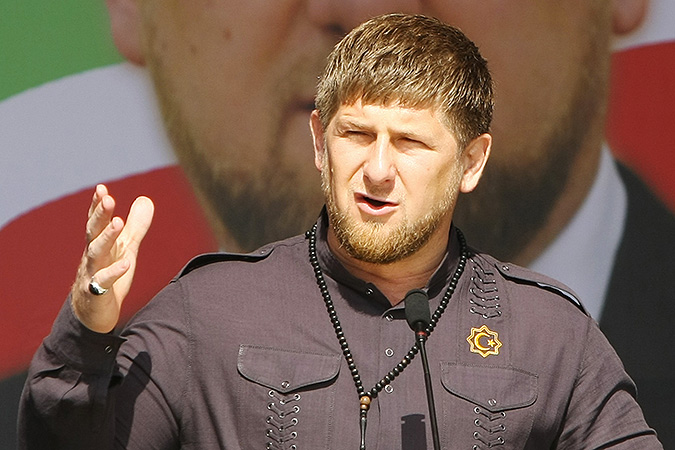
Young Islamic Radicals Carry out Arson Attacks on Sufi Tombs in Chechnya
Publication: Eurasia Daily Monitor Volume: 12 Issue: 227
By:

Chechnya’s two-century-old Sufi tradition experienced its first crisis 30 years ago, when the first Salafists appeared in the republic. The Salafists did not simply proclaim the supremacy of their teachings, but aspired to take power in the republic. The Salafist aim of grabbing power sparked the first Salafist-Sunni conflict in Chechnya in the second half of 1990s.
When Russia launched the second war with Chechnya in 1999, it regarded the Sufis as allies against the Salafis. The alliance between Chechnya’s pro-Russian political leaders and its Sufi leaders weakened the positions of Sufism in the republic. A certain part of society in Chechnya preferred to see Islam there maintain its traditional neutrality—that is, to abstain from radicalism but also avoid an alliance with the Russian authorities. The armed underground in Chechnya gradually transformed from a moderate secessionist movement to a religious radicalism that rejects everything that does not fit into their view of the world. Still, even the radicals tried to avoid a direct clash, saying they accepted the Sufis (YouTube, September 10, 2012).
A recent incident involving an arson attack on a ziyarat (a sheikh’s grave that has become a pilgrimage site) in the village of Kurchaloi shocked the entire republic (Grozny.tv, November 18). Four residents of the village of Mairtup—Jabrail Usumov, Shamil Ergiev, Khamzat Uspaev and Islambyli Yunusov—were arrested for setting fire to the tomb of Yangulbi-Haji Dokhtukaev, a Sufi sheikh of the Naqshbandi Tariqat who was a famous Muslim preacher in the 19th and beginning of the 20th centuries. The attackers sprinkled gasoline on the tomb, which is only a simple construction with verses from the Koran covered with a carpet, and set it on fire. The young men apparently wanted to use the attack to highlight the failure of the policies of Chechen leader Ramzan Kadyrov, who relies on the support of Sufism and declares support for Russia and Vladimir Putin personally. However, it was not the first arson attack on a ziyarat. Earlier, on October 10, unidentified individuals set fire to the ziyarat of another Sufi hermit, Durdi-sheikh, in the cemetery of the city of Shali. Durdi-sheikh lived in the 19th century and was known for his life as a hermit. The authorities failed to solve that arson attack, thus no reaction from Kadyrov or the wider public followed. These attacks on Sufi sacred sites were the first since the 1930s, when militant atheism ruled the country and the Bolsheviks attacked ziyarats, demanding that Muslims stop visiting the tombs of respected sheikhs.
In the second arson attack, the authorities managed to intercept the perpetrators quite quickly and turned the incident into a propaganda tool by staging a protest against all radicals. The four young men were taken to Kadyrov and tried to explain their behavior as some kind of mental aberration and lack of understanding of what they were doing. In reality, the four young men likely knew perfectly well what they were doing. One of the attackers said on TV that they were plotting it as a protest against everything related to Sufism (YouTube, November 17). It turned out that the attackers had their own group of people dissatisfied with Sufism. They are not members of the armed underground, but certainly support it morally, and would have been no surprise had they traveled to Syria to join the so-called Islamic State.
Kadyrov used their arrest to try and show the impact of the Internet and its use by Islamic radicals in brainwashing the minds of young people. However, he also raised the question of why young people do not trust well-known preachers or those who have authority in the republic, and that question remained unanswered. The perpetrators of the attacks said that they carried them out on the orders of some Dagestani preacher who published his videos online (Ng.ru, December 2).
In reality, however, the key to understanding the behavior of the four is in their rejection of Muslim clerics who collaborate with the government. Sufism was opposed to the Russian Empire and later to the Soviet Union, but today it has acquired a bad reputation due to its alliance with the government of Vladimir Putin. And while the vast majority of Chechens regarded the attacks on the Sufi sheikhs’ tombs as unacceptable behavior, they also disapproved of Kadyrov’s response to the arson attacks. The police took the four young men on a tour across Chechnya and in each town people in public gatherings would condemn them and curse them, thereby also insulting their parents (Checheninfo.ru, November 28). By mid-December, the police had taken the four arsonists to half of the republic’s towns, but it remains unclear what will happen to them by the end of the public campaign. Most likely they will either have to leave the republic or be criminally prosecuted for vandalism. Some people are already calling for the relatives of the young men also to be held responsible (Svpressa.ru, November 23). It appears that punishing relatives of those who have committed crimes has become the new normal in Chechnya.
The arson attacks on the ziyarats in Chechnya suggest there are not only isolated individuals under the influence of radical Islamist Internet propaganda, but entire circles of people prepared to undermine the Sufi predominance in the republic. Radical Islam in the North Caucasus clearly went on the offensive after the so-called Islamic State was proclaimed in Syria and Iraq. The alliance of radical Islam in the North Caucasus with Middle Eastern radicals has only just begun to demonstrate its power in the region, including Sufi-dominated Chechnya and Dagestan. However, armed clashes will eventually become more predominant than secret arson attacks on Sufi sacred sites. Sufism in the North Caucasus still has a strong hold on society, but as the recent incident above demonstrates, it is not a guarantee against growing radicalism.




